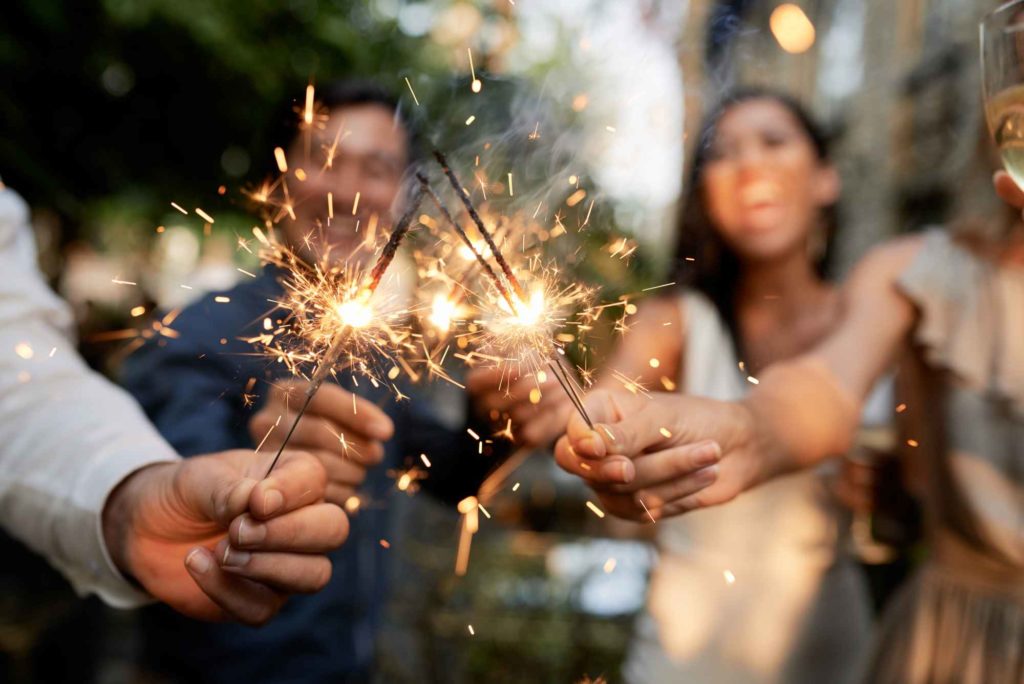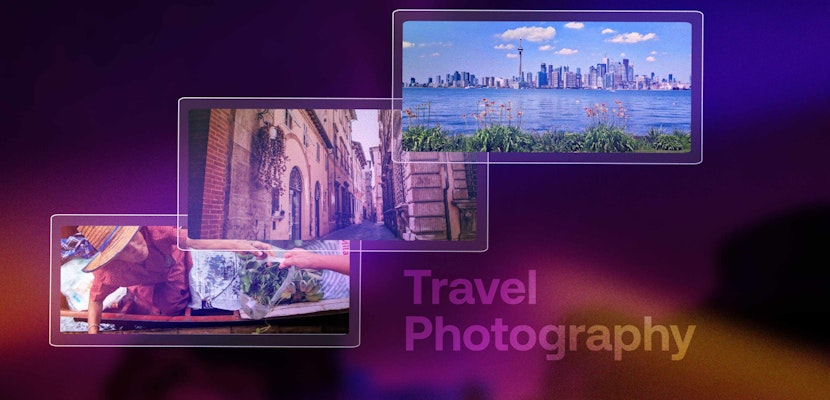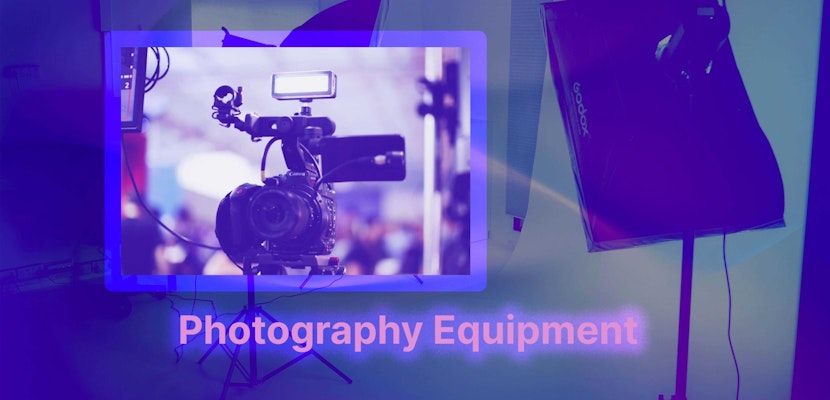Saying yes to photographing a wedding is a huge commitment. There are no opportunities to reshoot the groom’s first look at the bride, the exchange of rings or capture the subtle intimacy of their first dance. You will have plenty of family and friends giving you suggestions and making demands. You’ll be on your feet all day. And there will be at least one crisis.
But you also have the privilege of documenting one of the most important and special days in the life of your clients. Photographing a wedding is a rewarding joy. These wedding photography tips should help to get it just right, and be able to enjoy the experience, too.
Summary
Part 1: Top 5 Must-Capture Wedding Shot List
There are certain photos that everyone expects to see from a wedding album. You can always put your own spin on how to capture them, but make sure you’ve fulfilled this wedding photography checklist.
1. Wedding Prep

Wedding preparation photography is usually a fun and intimate time, with the opportunity for both amusing and emotional images. Make the most of this calm-before-the-storm. With brides and their attendants, you should capture both detailed and full-length shots of the dresses as well as photos of the shoes and bouquets. When a bride’s father, and sometimes mother, sees her for the first time in her dress is a big moment, too.

For grooms, you will want detail shots, too, such as buttonholes and cufflinks. Keep an eye out for those quiet moments between grooms and their parents, as well as with their best men. It can sometimes be tricky to get two sets of preparation photos depending on logistics, in which case be sure to spend some time at the venue before the ceremony with the groom, his family and the best man.
2. Entrance and First Look
While some couples might not choose for one of them to make an entrance and walk up the aisle, the first look between the just-about-to-be-married partners is a must-photograph moment. So whether it’s a “first look” shoot or as one of them walks up the aisle, be in position to capture it. Likewise, capturing the moment that one or both of them step into the venue and are seen by their guests is magic, so be ready for that as well.

3. The First Kiss
This is the shot of the wedding, so do be sure to be in a position to capture the moment. There will be lots of other kisses throughout the day, both staged and candid; stay alert to the candid moments and remember to set up a tender forehead kiss shot.
4. The First Dance
The first dance gives you a perfect opportunity to capture your newly married couple enjoying a moment together, while surrounded by their family and friends. Look out for the meaningful glances between them and check beforehand what their dancing is like and if there are special moments to capture, such as lifts or spins. The lights are usually dimmed by this point, so make sure that your settings are spot on for the conditions.

5. The Party
From the speeches to everyone dancing, the party will be filled with moments for you to photograph. It is a great time for you to be creative as everyone is having a blast so all the photos will come out natural. We recommend using a 35mm lens with a 1.2 or 1.4 aperture and with your handy flash by your side as a great combination for capturing the flooding energy.
But don’t forget the shot of the cake cutting among your shot list: it’s a must-have!
Part 2: 15 Impressive Beginner Wedding Photography Tips
To get the shots that you want and to try to help the day go as smoothly as possible, here are 15 wedding photography ideas not to forget.
1. Set and Manage Expectations
In your preparation meetings, be sure to set out what your clients can and cannot expect from you. Of course, your contract should include details such as fee, turnaround time and a number of photos to be delivered but it’s worth reiterating this. Make the couple aware of how much time formal portraits will take, and that they will need to set aside time for these. They might not be aware of any restrictions around photos of the ceremony, so be sure to inform them.

2. Clarify Wedding Traditions
Some couples will want the full raft of photos with their families and wedding guests. Others won’t. Some couples will want you to pay particular attention to particular traditions specific to their families or faiths. Some won’t. Some couples will have an idea of certain shots that they really want. Others won’t. Some couples will include something within the wedding that’s important to them, maybe they’ll arrive in vintage cars, or perhaps one of the rings will be an heirloom and the donor will be in attendance, so these need due attention. But again, some won’t. All weddings and couples are different, so find out what makes each one special and work to capture it.
3. Be Prepped & Ready
Being prepared isn’t just about having the right kit, spares, making everything “wedding-ready” (so charging everything, turning off beeps), and having your wedding photography checklist to hand. It’s also about scouting the wedding venue to see what will make great backgrounds and where the light will be falling and when. It’s about talking to the wedding celebrant to ensure that you understand their rules during the ceremony. For example, some celebrants will not want you to move about. Others will expect you to refrain from taking photos at certain points in the ceremony. And flash might well be prohibited. If you know the order of service, you’ll be able to pre-visualize your shots to make life easier. And make sure that you have a timetable and shot list for the entire day.

You should make eating arrangements with the couple, too. You can’t go a whole day without eating and part of the deal is usually that they feed you. Even so, pack a sandwich and a drink. Take a second pair of shoes with you, too. Changing your shoes will give you a boost when you’ve been on your feet all day but the party’s still to come. Remember to expect the unexpected. You never can tell what might happen.
4. Get Yourself a Sidekick (or 2)
In your wedding preparation meetings, ask the couple if they can nominate a friend or family member who will be able to help you wrangle people on the day. You won’t know which aunts and uncles come on which side of the family, but this person will, and can identify, locate and help to marshall them for the right photos. You might need one for each side, depending on how well the families know each other.
5. Carry an Emergency Kit
You’re going to be around for most of the day and spend most of it with the couple, which means that if anything goes awry, the chances are you’ll be close by when it does. So carry an emergency kit: wet wipes and tissues, a small sewing kit, stain remover, comb and hairpins, antiseptic and plasters, and an umbrella.

6. Look At the Backgrounds
When you scout the wedding venue, look out for locations that will form the background for different shots. For example, steps for group shots and blossoming trees or water features for couple photos. It’s worth talking to the wedding coordinator at the venue, as they will know favorite spots or those that can be tricky to work with. You might also want to create some props if the venue isn’t sparking your creative streak, for example, giant picture frames, fairy lights, and flower-covered ladders or chairs. And bridal attire makes brilliant props, too. Use the veil to create a romantic mood and take ring photos against the bouquet.
7. Don’t Discard Mistakes
You will be taking a lot of photos on a wedding day. Don’t attempt to decide which are worth keeping and which aren’t on the hoof. For a start, if you’re looking at your screen you’re missing out on a potential shot happening in front of you. But also, what you might consider a “mistake” in the heat of the moment is actually a photo that tells a brilliant story.

8. Fill Flash
Carry a flash. You might not be able to use it during the ceremony, but it can really help lift shadows in exterior photos. The idea is that it fills in light where natural light doesn’t go. Especially in midday shooting conditions where this for sure will be the case, the fill flash is a must. Be careful not to overdo it as with everything in photography – aim for subtlety as too much flash can look artificial and overexposed.
9. Continuous Shooting Mode
Having your camera set to continuous shooting mode is incredibly useful because it means that you’re less likely to miss a moment. Sometimes the moment after the posed shot, there is that beautiful natural look that truly captures the perfect photo memory. Sometimes it does take a couple of shots to make sure you have all the photos you need to complete the wedding shot list.

10. Look for the Action
Vary your angles for interesting photos, and be sure to look out for children sitting beneath tables playing board games or having their own feast. Weddings throw up so many different photo opportunities, you need to be constantly on the lookout for them.
11. Cooperate with Other Vendors
A lot of different people go into making a wedding happen: celebrants, makeup artists and hairdressers, florists, caterers and bakers, DJs and bands, and the venue’s event manager. Cooperate with them so that you can all do your jobs brilliantly and make the day wonderful for the couple. You never know: they might recommend you to other couples and bring you more work.

12. Make Backups
Remember to rotate your memory cards throughout the course of the day, and periodically backup the photos that you’ve taken. We would actually recommend copying the images to your external hard drive or cloud subscription immediately after the shoot – literally having 3 copies is actually ideal. Losing the photos would be a disaster, both for the couple and for your professional reputation.
13. Share Teasers
The turnaround for wedding photos is usually four weeks. But sending the couple a few of your favorite photos within a day or two of the ceremony, and ideally before they go on a honeymoon, is a great way to keep them excited for the final product but also help to keep them satisfied. Most wedding photographers will also share a few photos on their websites and social media platforms, too. It’s good advertising, and great for the guests.
14. Give Referral Incentives
The chances are that one couple will know another couple getting married shortly, and looking for a photographer. Offer them an incentive if they recommend you. Maybe some free prints, or a reduced fee for future shoots.
15. Invest in Software
Editing wedding photos isn’t about adding a few filters. It’s a craft that you’ll need to apply to each image. However, over time you’ll develop a style which means that you can also save presets that can be applied to images to give them your signature “look”. Invest in good editing software and you’ll give yourself the best tools for the job.
These wedding photography tips for beginners should help you on your way to capturing beautiful wedding images that will delight your couples. Being prepared really is the key, from knowing the venue to managing the couple’s expectations but at the same time meeting their needs as best you can. A final wedding photography tip: enjoy yourself. It’s a wedding. It’s a happy occasion. Bring joy to it for the couple.



























